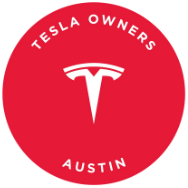The debate over electric vehicles continues to rage on, with some enthusiasts still hesitant to embrace the new technology. The push to replace gas-powered sports cars and high-horsepower vehicles with electric alternatives has sparked a backlash among some who fear the demise of their beloved gas guzzlers. However, the key to winning over skeptics may not lie in trying to replicate the gas car experience with electric powertrains.
The recent release of the Dodge Charger Daytona EV has highlighted some of the challenges in transitioning muscle car enthusiasts to electric vehicles. Priced at $85,965, the Daytona is certainly quick, with a 0-60 sprint of 3.3 seconds. However, in a world where electric vehicles like the Tesla Model 3 Performance and Hyundai Ioniq 5 N offer superior performance at a lower price point, the Daytona may struggle to make a compelling case for itself.
One of the main selling points of the Daytona is its simulated engine noise, achieved through a “Fratzonic” chambered exhaust system. While this may appeal to fans of traditional muscle cars, the lack of a simulated gearbox means that the noise can become monotonous over time. In contrast, vehicles like the Hyundai Ioniq 5 N offer a more sophisticated approach to recreating the gas car experience, with features like the N Grin Shift system adding excitement and engagement for the driver.
For muscle car enthusiasts who crave the roar of a V8 engine, there are still plenty of options available in the gas-powered market. From the iconic Ford Mustang to the classic Dodge Challenger, there are plenty of affordable and powerful gas cars to choose from. The EV version of the Charger, with its high price tag and lackluster performance, may struggle to attract die-hard muscle car fans.
While it would be ideal to convert Charger owners and other EV skeptics to more efficient electric vehicles, the focus should perhaps shift towards electrifying everyday vehicles like SUVs and trucks. By targeting mainstream models like the Toyota RAV4 and Ford F-150, we can make a bigger impact on reducing emissions and promoting sustainable transportation. The future of electric vehicles lies not in replicating the past, but in creating a new and exciting driving experience for all.

